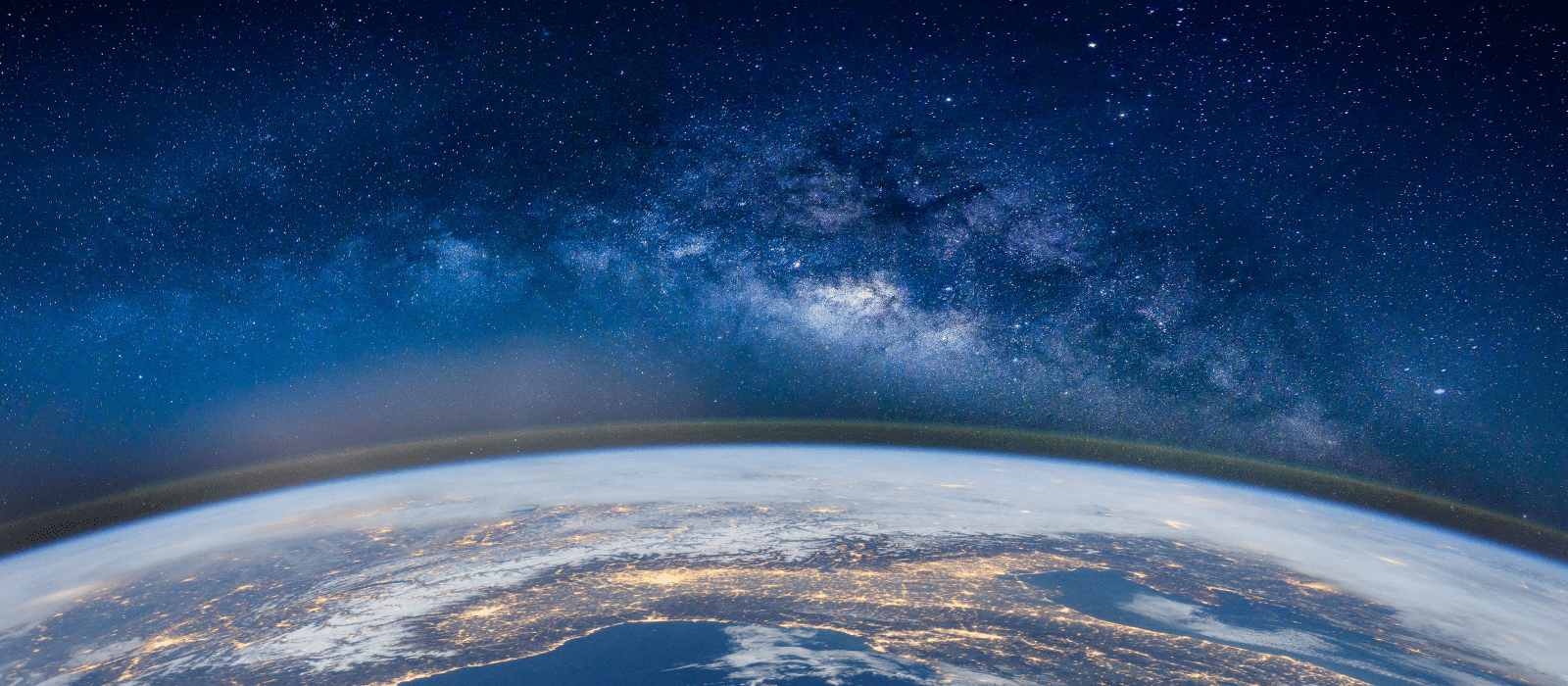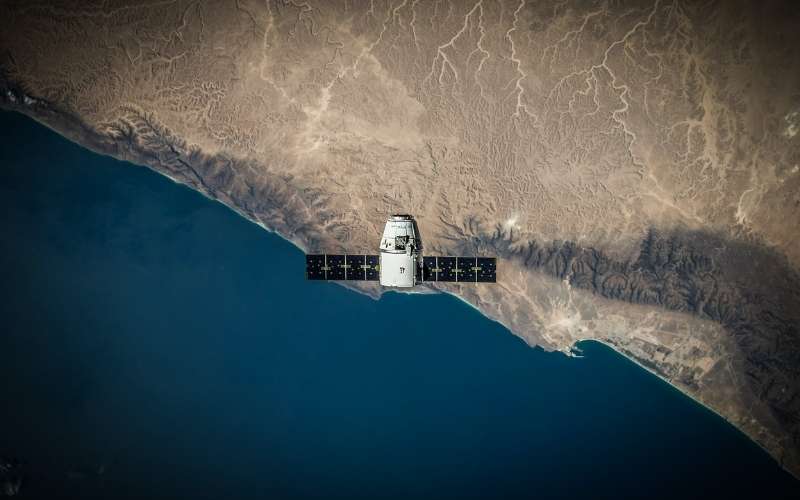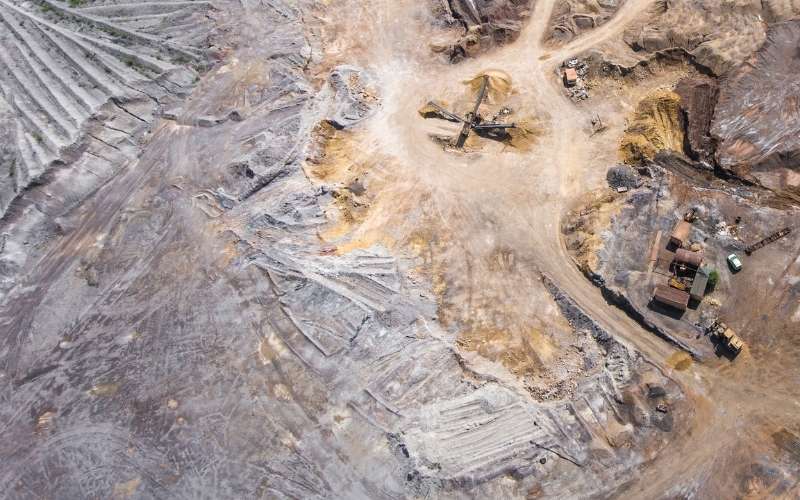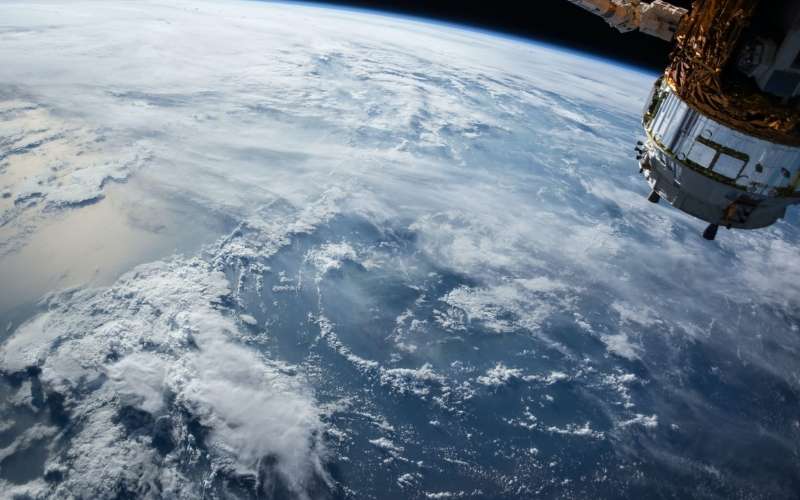Australia’s booming space industry: creating opportunities for mining

Australia’s growing space sector
Australia’s space sector has burgeoned since the establishment of the Australian Space Agency in 2018. Growth is set to continue, with the Australian Civil Space Strategy outlining plans to grow the sector to A$12 billion and add 20,000 jobs by 2030 (Australian Trade and Investment Commission, 2021). Recently the Federal Government has announced – via the Minister for Science and Technology Melissa Price – $1.2 billion in funding to support the National Space Mission for Earth Observation (NSMEO) led by the Australian Space Agency in partnership with CSIRO (Australia’s national science agency), Geoscience Australia, the Bureau of Meteorology and Department of Defence (Price, 2022a). The NSMEO will deliver on the vision in the Australian Space Agency's Earth Observation (EO) Roadmap – that Australia increases its sovereign capability by designing, testing, and launching Australian Earth Observation (EO) instrument payloads, while supporting economic and industry growth.
With this growth comes great opportunity for those industries ready to leverage emerging space-enabled technology to obtain data-driven insights. First movers in the mining industry are already seeing the benefits of employing space-enabled technology in their operations, and emerging technologies are presenting opportunities to deliver improved efficiencies and environmental, social and governance (ESG) outcomes across the entire mining value chain. New partnerships, such as the joint Statement of Intent signed earlier this month between the Australian Space Agency and NASA, will enable Australia to quickly grow capability in the space industry, with flow on effects of skills and knowledge transfer to other technology driven industries such as mining (Price, 2022b).
The flourishing Australian space sector is seeing rapid growth with expansion to deliver a growing list of products and services to the mining industry. The space ecosystem can be broadly defined as ‘upstream’ and ‘downstream’. Upstream refers to research, space operations, ground systems and manufacturing including equipment, launch and command. The downstream component refers to space operations for terrestrial use including those products and services that rely on satellite technology, including Earth Observation (EO), Geographical Information Systems (GIS) and GPS/GNSS (Global Positioning System/Global Navigation Satellite Systems) (European Space Agency, 2019). Both upstream and downstream activities are critical to the future of mining.

Space-enabled technology: key to Australia’s future mining industry
Data-driven decision making will be key to the transition to Industry 4.0 (Byrne and Engdahl, 2021). Australia’s future mines will leverage space-enabled technologies to become fully data-integrated and data-driven operations. For example, space-enabled communications are essential to the roll-out of IoT (Internet of Things) sensors across our current and future mines. Increasingly, direct-to-orbit communications will enable high-bandwidth, low-latency (minimal delay) communications for remote mine sites, enabling real-time visibility on production, quality, cycle times, status of equipment and plant, safety and risk metrics. Space-enabled technologies will create a proliferation of new data and deliver benefits across the mining life cycle. Satellite Earth observation will aid exploration, planning and construction, track materials movement across the supply chain, contribute to safety and tailings management and will play a key role in ESG reporting, compliance and post-mining recovery. Space-enabled high accuracy positioning will also underpin robotics and automation advancements across the industry.
The following examples showcase some of the many applications of space-enabled technology to the mining industry.
Earth Observation for exploration
Exploring for new mineral deposits is like looking for a needle in a haystack and new discoveries will increasingly be found in very remote areas. Explorationists need to be able to rapidly assess broad terrane-scale features early in exploration planning to assess prospectivity and identify areas of focus. Remotely sensed airborne geophysics (such as magnetics, gravity or radiometrics) are already widely used to narrow the search area and identify targets. Earth observation from space provides yet another tool in the exploration toolkit to assess large areas and generate targets for further investigation.
For decades, satellite Earth observation has routinely imaged the entire Earth surface. Over the last decade in particular image resolution, accessibility and number of spectral bands has dramatically improved. Multi-spectral Earth observation (tens of spectral bands such as Sentinel2, Landsat and WorldView3) already play an important role in mapping surface mineralogy, for example Geoscience Australia’s ‘Barest Earth’ model (Geoscience Australia, 2019). The increasing availability of hyperspectral imagery (HSI) (hundreds of spectral bands) from a new generation of commercial satellites and sensors will build on the data record started by sensors like ASTER and Hyperion. This will present exciting opportunities to map a much broader range of minerals from rare-earth bearing minerals to carbonates, sulphates and silicates such as quartz and feldspars. It will also enable mapping and modelling of regolith cover, lithology and alteration footprints which can be critical clues to mineralised systems.
Earth Observation for environment, social and governance best practice
Applications of Earth observation technologies extend beyond the exploration phase through to construction and planning, materials tracking during production, supply chain monitoring and site closure and rehabilitation. Responsible environment, social and governance (ESG) stewardship is imperative for the future success of the resources sector and leveraging space-enabled Earth observation technologies is already delivering improved ESG outcomes to industry.
For example, Curtin University in Perth has been pioneering new approaches to the identification and management of Groundwater Dependent Vegetation in the Pilbara region of Western Australia using multispectral satellite imagery from both the Sentinel-2 satellite and from the long-term Landsat archive. Curtin University, Geoscience Australia, the WA Department of Water and Environmental Regulation and FrontierSI have partnered with BHP, Rio Tinto Iron Ore, Roy Hill, Fortescue Mining Group and Atlas Iron to demonstrate the value of leveraging Earth observation technologies to monitor the impacts of mine dewatering. This work helps build the confidence of mining and regulatory users of Earth observation data through developing tools for vegetation monitoring. These tools assist both mining companies and regulators in monitoring environmental impacts and demonstrating compliance with regulatory requirements (FrontierSI, 2021). Benefits of this automated approach include cost and safety savings through less employee time spent in the field and more efficient impact assessment and compliance methods.
With satellite imagery and remote-sensing technologies now widely available, the integration of Earth observation into ESG reporting frameworks will become the norm across the industry. Earth observation can already provide accurate quantitative measurements of land disturbance and rehabilitation progress as well as remote monitoring of stockpiles, waste dumps and tailings facilities where ground-based measurements are unavailable or unsafe. Communicating impact using these technologies builds trust between operators and the community and delivers the transparency that shareholders are increasingly coming to expect.

The Internet of Things (IoT) and space-enabled communications
The growing proliferation of sensors will transform our future mines. The availability and functionality of sensors monitoring plant and equipment, water, waste and production is set to skyrocket and will enable a fully data-connected mine. A real-time flow of information gives instantaneous visibility of production, quality, cycle times and plant status (Sishi and Telukdarie, 2020). Building a common operating picture allows disparate teams to use the same data to make informed responsive and preventative decisions and ensure optimum efficiency in mining operations.
This network of physical sensors integrated with software and other technologies is known as the ‘Internet of Things’ (IoT) and relies on exchanging data with other devices and systems. To do this efficiently, these sensors must have excellent internet connectivity, which can prove challenging on remote mine sites. Space-enabled satellite communications ensure that remote sites have access to the right information at the right time. The ‘Advancing Space – Communication Technologies and Services 2021 – 2030’ roadmap is the first of the National Civil Space Priority Area technical roadmaps that outlines Australia’s commitment to providing low-latency reliable satellite-enabled communications across the country (Australian Space Agency, 2020). Space-enabled technology ensures that communications remain stable wherever and whenever needed.
A powerful demonstration of the potential of integrating IoT with other space-enabled technologies is Tailings Storage Facility (TSF) management. Satellite-connected deformation sensors embedded in tailings infrastructure give a real-time picture of dam wall stress, strength and overall facility integrity. Coupling these insights with interferometric Synthetic Aperture Radar (InSAR; which can accurately detect land surface deformation to a precision of 1 – 2 mm), Light Detection and Ranging (LIDAR), drone data, CCTV and physical inspections gives a complete picture of TSF status, problems that require remedial action and failure risk.
The power of positioning
Space-enabled technologies underpin the foundational positioning infrastructure that allows us to observe and understand the relationships between people, things and places. Over the last decade there has been a rapid transition from standalone positioning towards precise point positioning, capable of locating points of interest down to the centimetre-level in real-time. Precise Point Positioning is a GNSS (Global Navigation Satellite System) positioning method that uses positioning satellites, global reference stations, detailed error modelling and corrections to deliver precise position to end users via satellite or over the internet. Developments in positioning technologies are already transforming a range of process and systems across industries and have introduced many exciting opportunities for the mining industry.
Among the early adopters of precise positioning technologies, mining fleet automation continues to drive innovation in this area, as operators strive to deliver increased efficiency, improve safety and reduce waste, resulting in flow-on effects across the entire mining value chain. Fundamentally, precise positioning is a critical component of the safety and control systems which will be required in the future broad-scale transition to mine automation. As the solutions pioneered by the mining and resources industry continue to evolve, there exists a significant opportunity to share the tools, techniques and lessons learnt across other industry sectors.

Space and mining: cross-sector collaboration
Links between the space and mining industries don’t stop with space-enabled technology applications on our mine sites. Other key areas to watch include advances in remote operations technology and even space mining.
Remote operations
AROSE (Australian Remote Operations for Space and Earth) is an industry-led, not-for-profit organisation unifying Australia’s world leading remote operation capability in response to the future requirements of industry. AROSE is fostering collaboration and knowledge and technology transfer between industry sectors to lead the way in demonstrating application of cutting-edge remote operations technology. Remote operations capability has been developed to enable communication between machinery and robots at a distance, either within line of site or off site entirely. Remote mine sites provide fertile ground for innovation, engineering activities and solution-based approaches to the challenge of remote operations, with technology advancements applicable across multiple industries (Australian Space Agency, 2020). As a result, mine sites are acting as a proxy for space environments in development of remote operation technologies and increasing investment in space is being leveraged to grow Australia’s mining industry. Australia’s mature mining industry provides an excellent testbed for experimentation and demonstration of emerging technology solutions, and the increased investment in space and remote operations will have flow on benefits to the mining industry resulting in safer, more efficient future mines.
Space mining
Space mining seems like science fiction, but one day is likely to present exciting opportunities for both technology and mining companies. Near-Earth asteroids have been identified that could one day be mined for bulk and precious metals and rare earths. One asteroid in particular is thought to contain iron, nickel and cobalt exceeding Earth’s total reserves (Carter, 2021). While advances in this area are certainly a way off, NASA is already planning to launch a mission in 2022 to orbit and investigate 16 Psyche, a metallic asteroid between Mars and Jupiter (Carter, 2021). While the products from space mining are most likely to be used in space rather than on Earth, developments in this area also present opportunities for terrestrial mining. Space mining will require development of mining technologies and engineering solutions that require minimal water and energy, technologies that may very well transform the way we mine here on Earth.
Space: shaping future STEM careers
According to the Federal Government, Australia’s growing space industry will generate an additional 20,000 jobs by 2030 (Price M, 2022c). To meet this demand, it will be necessary to build Australian technical capability underpinned by a highly skilled STEM workforce. According to Australia’s Chief Scientist, almost all skills that will be required by our growing space industry are experiencing some level of shortage in Australia. A 2021 report issued by the Chief Scientist focused on tertiary education, concentrating on ‘producing graduates with a wide range of generic but transferable STEM skills, rather than space-specific skills’ (2021). To deliver the skilled workforce needed at least 300 new scientists and 900 new engineers will need to be trained every year for the next decade. This focus on STEM education will present a large potential talent pool to the mining industry, particularly in emerging complex technology, engineering skills, digital integration, data science and automation. This provides an important opportunity for two-way skills transfer, with new career opportunities emerging for professionals in the mining sector to utilise new technical skills and collaborate across domains. Australia’s new investment and aspirations in space will inspire the next generation of Australian STEM professionals and leveraging this new skills base will drive the future success of the mining industry.
Conclusion
The sky is the limit when it comes to the impact of space-enabled technology applications to the mining industry. With future growth planned in the Australian space sector, now is the time to engage, collaborate and leverage existing and emerging space-enabled technologies across the entire mining value chain. The mining and space industries are both set to benefit from cross-sectoral collaboration driven by a shared need for the new digital and technology skills of the future workforce.
About FrontierSI
FrontierSI is a not-for-profit company that exists to deliver major benefits to governments, industry and the community in Australia and New Zealand using our deep skills in spatial analytics, infrastructure, geodesy and standards.
References
Australia’s Chief Scientist, 2021. ‘Rapid Response Information Reports 2021: Space Industry and the STEM Workforce’ [online]. Available from: Available from: https://www.chiefscientist.gov.au/sites/default/files/2021-09/Rapid%20Response%20Information%20Report%20-%20Space%20Industry%20and%20the%20STEM%20workforc....pdf
Australian Space Agency, 2020. Advancing Space Communications Technologies And Services Roadmap 2021-2030 https://www.industry.gov.au/sites/default/files/2020-12/communications-services-and-technologies-roadmap.pdf
Australian Trade and Investment Commission, 2021. ‘Australian space industry set to rocket to new heights’ [online]. Available from: https://www.austrade.gov.au/international/invest/investor-updates/2021/australian-space-industry-set-to-rocket-to-new-heights
Byrne B and Engdahl C, 2021. ‘Mining 4.0: How innovation is shaping mines of the future’ [online]. Available from: https://miningdigital.com/smart-mining/mining-40-how-innovation-shaping-mines-future
Carter J, 2021. ‘Space Mining: Scientists Discover Two Asteroids Whose Precious Metals Would Exceed Global Reserves’, Forbes, [online]. Available from: https://www.forbes.com/sites/jamiecartereurope/2021/10/19/the-age-of-space-mining-just-got-closer-as-scientists-discover-two-asteroids-whose-precious-metals-would-exceed-global-reserves/
European Space Agency, 2019. ‘Measuring the Space Economy’ [online]. Available from: https://space-economy.esa.int/article/34/measuring-the-space-economy
FrontierSI, 2020. Extracting the benefits of Earth Observation: Digital Earth Australia and the Mining and METS Industries.
FrontierSI, 2022. Know the Market to Grow the Market, Capability Viability and Due Diligence Report for SmartSatCRC.
Geoscience Australia, 2019. ‘30 years of Australia at its barest’ [online]. Available from: https://www.ga.gov.au/news-events/news/latest-news/30-years-of-australia-at-its-barest
Mining.com, 2021. ‘New hyperspectral imaging satellite expected to support mining operations’ [online]. Available from: https://www.mining.com/new-hyperspectral-imaging-satellite-expected-to-support-mining-operations/
Price M, 2022a. ‘Australia's first national space mission central to Budget 2022-23’ [online]. Available from: https://www.minister.industry.gov.au/ministers/price/media-releases/australias-first-national-space-mission-central-budget-2022-23
Price M, 2022b. ‘Working with the US in space to deliver benefits on Earth’ [online]. Available from: https://www.minister.industry.gov.au/ministers/price/media-releases/working-us-space-deliver-benefits-earth
Price M, 2022c. ‘Keeping Australia's space sector soaring’ [online]. Available from: https://www.minister.industry.gov.au/ministers/price/media-releases/keeping-australias-space-sector-soaring
Sishi M and Telukdarie A, 2020. Implementation of Industry 4.0 technologies in the mining industry-a case study. International Journal of Mining and Mineral Engineering, 11(1), pp.1-22.